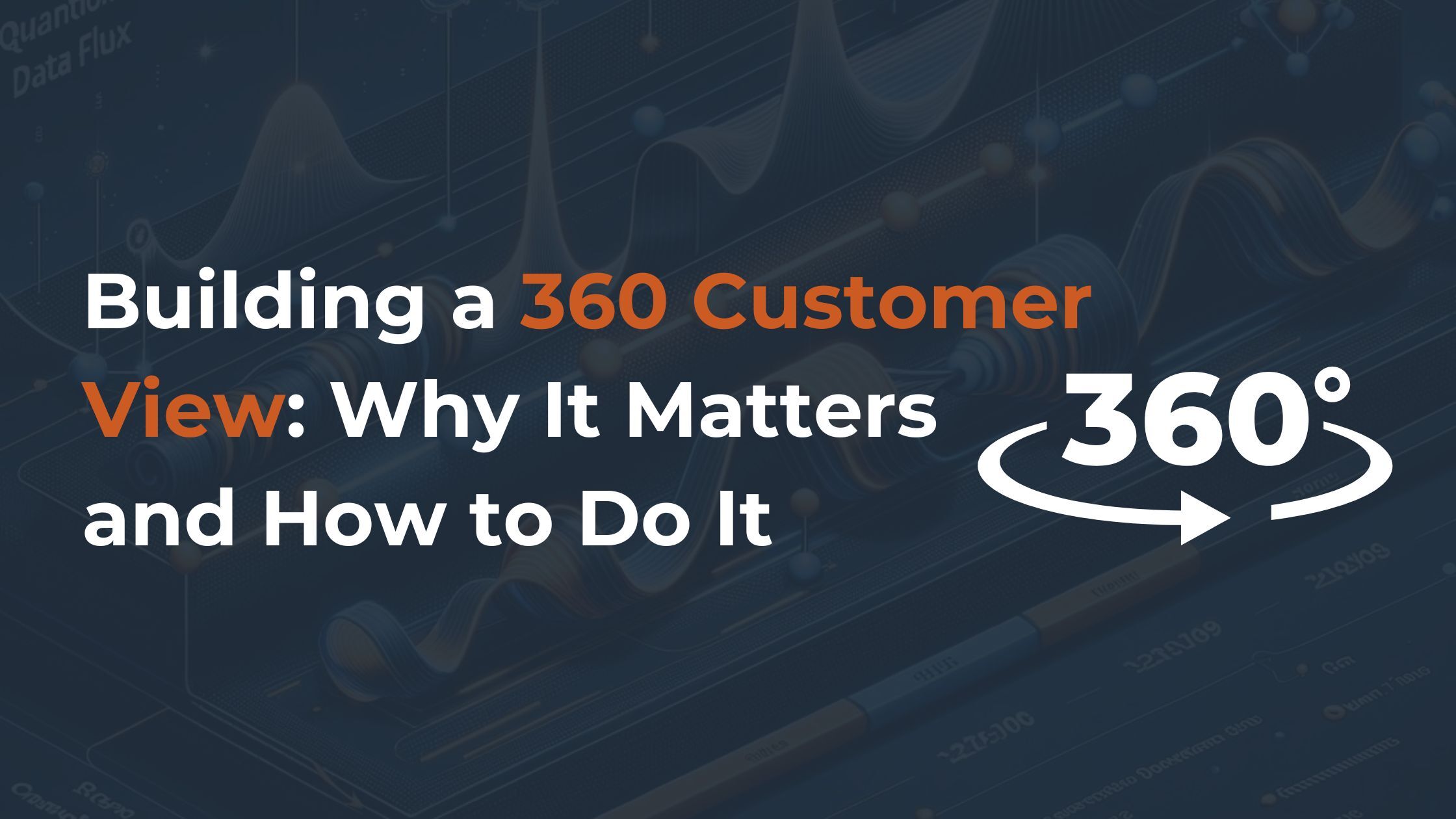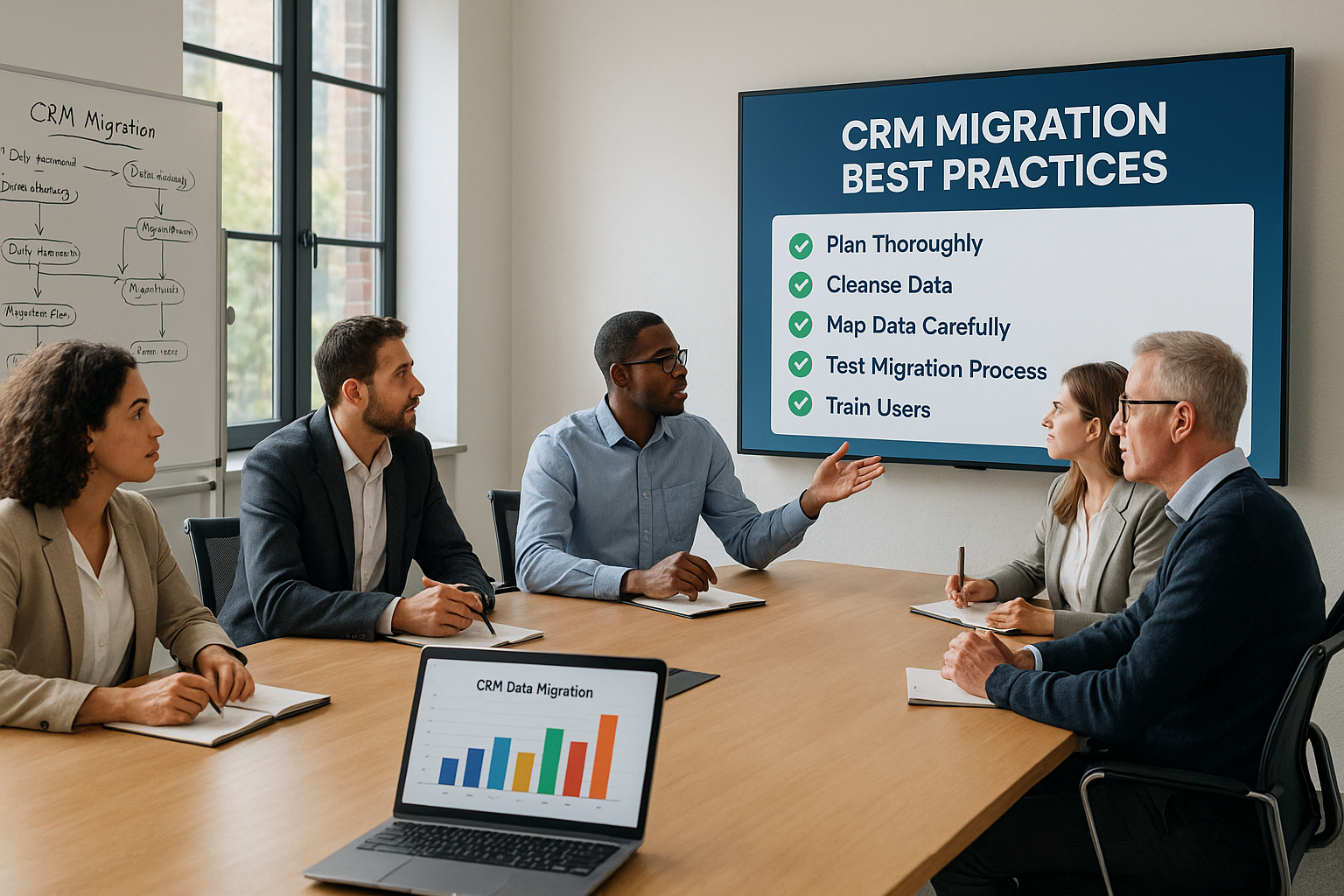Table of Content
- What Is a 360-Degree Customer View?
- Benefits of Building a 360 Customer View
- Steps to Build a 360-Degree Customer View
- Challenges in Implementing a 360 Customer View
- Tools and Technologies Supporting Customer 360
- Real-World Use Cases of 360-Degree Customer Views
- Measuring the Impact of a 360 Customer View
- Conclusion
- Frequently Asked Questions
What Is a 360-Degree Customer View?

What is 360 view? A 360-degree customer view is a comprehensive, unified profile of each customer that consolidates data from all interactions and touchpoints across your business. It goes beyond just knowing who your customers are; it captures what they’ve done, what they’re doing, and what they’re likely to do next.
This view brings together a wide range of data, including:
- Demographics and contact details
- Purchase history and transaction value
- Website visits and product views
- Email engagement and campaign responses
- Customer support tickets and chat history
- Social media interactions and sentiment
- Contract details and account status (for B2B)
The goal is to create a single source of customer information that gives marketing, sales, service, and support teams full context about a customer’s journey from the first touch to the latest interaction. The result is a clearer understanding of each customer’s needs, behaviors, and potential in one place.
Benefits of Building a 360 Customer View
Personalized Customer Experiences That Build Loyalty
A 360-degree view of the customer enables personalization by consolidating all touchpoints (from past purchases and website visits to support interactions). With full visibility into a customer’s journey, your teams can tailor each customer experience based on actual behavior and preferences. For example, service agents can reference prior conversations or purchases to provide faster, more relevant assistance, building trust and demonstrating that your business truly knows and values the individual.
This approach doesn’t just boost satisfaction, it also fosters long-term loyalty. Customers who feel recognized and understood are far more likely to stay engaged and return.
Proactive and Informed Customer Support
We’ve all experienced the frustration of explaining the same issue to multiple agents. These repetitive handoffs eat up time, drain customer patience, and burden internal resources. With a complete customer profile in hand, your support team doesn’t have to waste time digging for details or transferring calls unnecessarily. Instead, they can resolve issues in a single interaction, saving time for both the customer and your company.
HubSpot Research reveals that speed is critical: 90% of customers say getting an immediate response is important when they have a service question. Even more telling, 60% define “immediate” as 10 minutes or less. With a customer 360 view, your team is equipped to meet those expectations.
Smarter Predictions for Future Success
Having complete customer data also gives your business a significant edge in predictive analytics. Whether it’s suggesting a complementary product or identifying churn risks early, predictive analytics allow you to act before the customer even realizes what they want. This proactive approach supports upselling and cross-selling, enhances the buyer journey, and helps you refine your offerings based on real usage patterns and pain points.
On a broader scale, the insights derived from predictive models can shape future campaigns, improve product development, and strengthen strategic decision-making across the business. The richer your customer view, the more accurate and actionable your predictions will be.
Increased Customer Retention and Loyalty
Customer retention becomes easier when you can track sentiment, usage, and engagement across every channel. A comprehensive view enables proactive outreach before issues escalate. For instance, if a high-value customer has reduced product usage or submitted multiple support tickets, your team can intervene early with personalized offers, feedback requests, or account reviews. These timely interactions help build long-term loyalty and reduce churn.
Steps to Build a 360-Degree Customer View

Here are the key steps involved in building a 360-degree view of the customer:
Data Collection from Multiple Touchpoints
The first step is gathering data from every channel where your customers interact with your brand. This includes your website, social media platforms, email marketing tools, e-commerce store, CRM system, customer support software, and even offline events.
Each customer interaction reveals valuable insights (clicks, purchases, product inquiries, support tickets). Capturing data from all these sources ensures that you’re not relying on fragmented or incomplete information. You will have a comprehensive foundation of both quantitative and qualitative customer data, covering behaviors, preferences, feedback, and engagement history.
Mapping the Customer Journey for Better Data Context
Once data is collected, it’s essential to organize it within the context of the customer journey. Mapping out this journey from awareness and consideration to purchase and post-sale engagement helps you understand what data is generated at each stage and why it matters.
By placing interactions within this timeline, you gain a more meaningful and holistic view of each customer’s experience. For example, a support request from a first-time buyer carries a different implication than one from a loyal customer.
Data Integration and Unification
With data flowing in from various sources, the next challenge is bringing it all together in a single system. This is where integration plays a critical role. Whether through native CRM integrations, APIs, or iPaaS platforms like SyncMatters, consolidating your data into one centralized database ensures that all teams are working from the same source of truth.
Unified customer profiles empower departments from marketing to sales to support with real-time access to complete customer information. A fully integrated system enables better decision-making and ensures continuity across the entire customer lifecycle.
Ensuring Data Quality and Accuracy
A customer 360 view is only as strong as the quality of the data behind it. Outdated, duplicate, or inconsistent data can mislead teams and disrupt the customer experience. That’s why it’s crucial to implement processes for regular data cleansing and validation.
Establish standards for data entry, set up automated checks for duplicates, and routinely audit your database for completeness. Additionally, encourage team-wide accountability for data hygiene. Ensure that everyone plays a role in maintaining a clean and reliable customer database.
Challenges in Implementing a 360 Customer View
While the advantages of a 360-degree customer view are clear, bringing it to life is not without its hurdles. Understanding these challenges is the first step to overcoming them effectively.
Fragmented Data Across Multiple Systems
One of the most common issues is data fragmentation. Businesses often use a mix of tools, meaning separate platforms for marketing, sales, customer support, and e-commerce that don’t communicate well with each other. Each system holds valuable data, but without proper integration, this information remains siloed and disconnected.
Lack of Integration Capabilities
Not all platforms are built with easy integration in mind. Some legacy systems or industry-specific tools offer limited APIs or require significant customization to sync with other software. This creates technical complexity and often slows down the process of unifying data. Without a strong integration strategy or the use of an iPaaS solution like SyncMatters, businesses struggle to centralize their customer insights.
Poor Data Quality and Inconsistency
Inaccurate, outdated, or duplicate data can significantly weaken the reliability of a 360-degree view. Inconsistent formatting, manual data entry errors, and disconnected records make it difficult to form a complete and trustworthy customer profile. If the foundation is flawed, insights drawn from it may be misleading, which can negatively impact marketing campaigns, customer service, and business decisions.
Privacy, Compliance, and Data Governance
With regulations like GDPR, CCPA, and others becoming stricter, businesses must ensure their customer data is collected, stored, and processed responsibly. When data is pulled from multiple sources, keeping track of consent and usage rights becomes more complex. A lack of proper governance not only risks non-compliance but also damages customer trust.
High Implementation Costs and Time Investment
Creating a 360-degree view may require investing in new technology, restructuring internal processes, and training teams. For smaller businesses or those with limited resources, this can feel overwhelming. However, the long-term ROI, in terms of customer retention, efficiency, and revenue growth, often outweighs the initial investment.
Tools and Technologies Supporting Customer 360
Building a 360-degree view of your customers doesn’t happen through spreadsheets and disconnected platforms. It requires the right mix of technologies that can collect, connect, and activate customer data in real time. Two of the most essential tools that support this effort are CRM systems and Customer Data Platforms (CDPs).
Role of CRM Systems in Achieving a 360 View
Customer Relationship Management (CRM) systems are often the cornerstone of a business’s customer data strategy. A 360 view CRM stores key information about contacts, companies, deals, communication history, and support tickets.
What makes CRMs essential to a 360-degree view is their ability to connect the dots across customer touchpoints. With modern CRM platforms like HubSpot, Salesforce, Zoho, and Pipedrive, businesses can automate data capture, track customer journeys, and personalize interactions based on real-time behavior.
CRMs also integrate with other tools, such as email marketing platforms, e-commerce systems, and help desks, to consolidate activity and provide context-rich profiles. This unified data helps teams:
- Personalize outreach and follow-ups
- Track lead and customer lifecycle stages
- Surface upsell and cross-sell opportunities
- Coordinate sales and support efforts
In short, CRMs make raw customer data a critical component of any 360-view initiative.
Utilizing Customer Data Platforms (CDPs)
While CRMs focus on managing relationships and workflows, Customer Data Platforms (CDPs) take data aggregation and identity resolution to the next level. A CDP is a specialized system designed to unify all customer data into a single, persistent customer record.
CDPs collect data from websites, mobile apps, transactional systems, marketing tools, and more, then cleanse, deduplicate, and stitch it together using advanced identity-matching techniques.
The key strengths of CDPs include:
- Real-time data unification across all channels
- Rich customer segmentation and predictive modeling
- Seamless integration with analytics and campaign tools
- Support for privacy compliance and consent tracking
Platforms like Segment, Twilio, BlueConic, and others empower businesses to go beyond basic contact records and into deep behavioral and predictive insights. This makes CDPs especially valuable for companies with complex customer journeys, omnichannel marketing strategies, or large data volumes.
While CRM systems and CDPs offer immense value on their own, their full potential is only realized when they are seamlessly connected.
SyncMatters offers 55+ connectors, including CRMs, CDPs, marketing tools, support platforms, etc, to unify your tech stack.
Real-World Use Cases of 360-Degree Customer Views

E-commerce
In ecommerce, a 360-degree view allows retailers to tailor every interaction based on a customer’s browsing behavior, past purchases, abandoned carts, and preferences. For example, a fashion retailer can automatically send follow-up emails with personalized product recommendations after a shopper views specific items but doesn’t convert.
The result? Increased conversion rates, reduced cart abandonment, and a more engaging shopping experience that feels curated rather than generic.
SaaS Companies
Software-as-a-Service (SaaS) providers use 360-degree views to monitor user engagement and identify customers at risk of churning. By combining product usage data, support interactions, and billing history, account managers can spot warning signs, such as declining login frequency or unresolved issues, and take proactive steps.
This may involve reaching out with personalized check-ins, offering additional onboarding help, or suggesting new features based on user behavior. Over time, this approach improves retention and customer satisfaction.
B2B Sales
In B2B environments, sales cycles are long and relationships are complex. A 360-degree view helps sales reps stay informed on every stakeholder, past deals, contract history, and support issues. When paired with intent data and marketing engagement, teams can prioritize high-value accounts and tailor their outreach accordingly.
For instance, if a decision-maker recently engaged with a pricing page and opened a demo email, the sales team can follow up immediately with relevant content, improving timing, relevance, and win rates.
Measuring the Impact of a 360 Customer View
Key Performance Indicators (KPIs) to Monitor
A unified customer view enables better decision-making, but its impact should be reflected in key business outcomes. Here are the most relevant KPIs to track when evaluating the success of your CRM 360 view:
- Customer Lifetime Value (CLV): A rise in CLV suggests that personalized engagement and timely support are building longer-lasting, more profitable relationships.
- Customer Retention Rate: If your retention is improving, it’s a sign that you’re better meeting customer expectations and proactively addressing pain points.
- Customer Satisfaction Score (CSAT): Use surveys post-interaction to gauge whether customers feel understood and supported. Higher scores often reflect the value of centralized customer data.
- Net Promoter Score (NPS): A strong NPS indicates that customers are not only satisfied but likely to recommend your brand.
- Sales Conversion Rates: With marketing and sales teams aligned around complete customer profiles, conversion rates often improve as outreach becomes more relevant and timely.
- Time to Resolution (Support): If your service reps have full access to customer history, they can resolve issues more efficiently, directly lowering resolution times.
- Campaign ROI: When marketing campaigns use data from a 360-view, their performance improves — better targeting, higher engagement, and ultimately stronger ROI.
Continuous Improvement through Feedback Loops
Start by collecting feedback from both your customers and your internal teams. Use surveys, support follow-ups, and customer interviews to understand their experience. Internally, gather insights from sales, marketing, and service teams about data usability, system gaps, or process bottlenecks.
This feedback should feed directly into regular optimization cycles. Whether it’s refining data sources, improving segmentation, updating journey mapping, or expanding integrations, continuous improvement ensures your customer view remains accurate and aligned with your goals.
Conclusion

A 360-degree customer view empowers businesses to meet customer expectations by bringing together data from every interaction, channel, and stage of the customer journey.
With a unified profile in place, your teams can understand each customer more deeply, respond more intelligently, and make decisions backed by real insights.
But building a 360-degree view isn’t just about technology; it’s about strategy, integration, and continuous improvement. By investing in the right tools like CRM systems, CDPs, and integration platforms such as SyncMatters, you lay the foundation for more agile, customer-centric operations.
The businesses that succeed in creating and using a customer 360 view will be those that know their customers best and serve them better at every turn.
Frequently Asked Questions
What Is the Difference Between a 360-Degree Customer View and Traditional CRM?
Traditional CRM systems store contact info and sales activities. A 360 view of the customer goes further by combining data from marketing, support, purchases, and more, giving you a complete, real-time picture of each customer.
How Long Does It Take to Implement a 360 Customer View?
Implementation time varies. Small businesses using cloud tools can get started in a few weeks. Larger companies with complex systems may need several months. Integration platforms like SyncMatters can speed up the process.
Can Small Businesses Benefit from a 360-Degree Customer View?
Yes, especially small businesses. The 360-degree details help smaller teams work smarter by personalizing outreach, responding faster, and improving customer loyalty without needing large budgets or complex systems.




